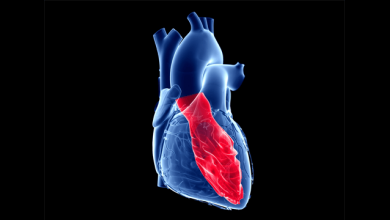Search results
Author(s):
Todd D Miller
,
J Wells Askew
Added:
3 years ago
Case Study
A 47-year-old male truck driver with no previous history of heart disease presents for his annual Department of Transportation physical. He has noticed mild dyspnoea when climbing stairs but not with other activities of daily living. He denies chest discomfort, palpitations, orthopnoea, paroxysmal nocturnal dyspnoea or ankle oedema. His risk factors for coronary artery disease (CAD)…
View more
Marcelo F Di Carli
Job title: Director, CV Imaging
Author
Author(s):
Pablo Del Castillo-Vásquez
,
Núria Casanovas
,
Marcel Santaló-Corcoy
,
et al
Added:
3 years ago
Topic: 2. Ischemic Heart Disease
Introduction and Objectives
Pharmacologic cardiac stress SPECT (PS-SPECT) is recommended for non-invasive evaluation of ischemic heart disease (IHD) in patients unable to exercise. Drugs used for stress in our centre are Dipyridamole (DIP) and Dobutamine (DBT). DIP can be associated to exercise (ex-DIP). The objective of the study is to evaluate the diagnostic…
View more
Author(s):
Mario Petretta
,
Carmela Nappi
,
Alberto Cuocolo
Added:
3 years ago
The application of nuclear medicine techniques to cardiology is based on the identification of the functional consequences of coronary stenoses, i.e. of myocardial ischaemia. In nuclear cardiology, the evaluation of myocardial perfusion with single-photon-emission computed tomography (SPECT) is the most commonly performed procedure. The SPECT study is currently performed with electrocardiogram …
View more
Prognostic Value of Stress Myocardial Single-photon-emission Computed Tomography in the Elderly
Author(s):
Santo Dellegrottaglie
,
Pierluigi Costanzo
,
Stefania Paolillo
,
et al
Added:
3 years ago
Article
Author(s):
Tito Kabir
,
Adel Aminian
,
Andrea Zuffi
,
et al
Added:
3 years ago
The benefit of primary percutaneous coronary intervention (PCI) over hospital-based thrombolysis for ST-elevation myocardial infarction (STEMI) has been established beyond reasonable doubt.1 However, thrombolysis remains an effective and widely used therapy for a significant proportion of STEMI patients and is particularly effective within two hours of the onset of symptoms.2 There may also be…
View more
Author(s):
Mario Petretta
,
Pierluigi Costanzo
,
Alberto Cuocolo
Added:
3 years ago
Myocardial blood flow (MBF) must respond to changes in metabolic conditions and oxygen requests to meet the needs of myocytes, and autoregulation plays a mayor role in the control of coronary circulation.1–3 It has been demonstrated that, as a coronary artery is progressively narrowed, resting flow does not change at first, but maximal flow (achieved by injecting a vasodilator) decreases…
View more
Author(s):
Thomas A Foley
,
Sunil V Mankad
,
Nandan S Anavekar
,
et al
Added:
12 years ago
Left ventricular ejection fraction (LVEF) is one of the most commonly reported measures of left ventricular (LV) systolic function. It is the ratio of blood ejected during systole (stroke volume) to blood in the ventricle at the end of diastole (end-diastolic volume). If the LV end-diastolic volume (EDV) and end-systolic volume (ESV) are known, LVEF can be determined using the following equation:…
View more
Author(s):
WY Wandy Chan
,
Richard W Troughton
Added:
3 years ago
Acute coronary syndromes (ACS) and acute pulmonary embolism (APE) are leading causes of hospital admission and mortality. Accurate risk stratification is important for both conditions to guide management and the use of therapies that lead to improved outcomes.
Acute Coronary Syndromes
Despite a steady decline in developed countries, ischaemic heart disease is still the leading cause of death…
View more
Author(s):
Alda Huqi
,
Giacinta Guarini
,
Doralisa Morrone
,
et al
Added:
3 years ago
Myocardial revascularisation in patients with stable chronic angina is performed with the aim of reducing cardiovascular death, reducing myocardial infarction (MI) and relieving angina symptoms. However, contrary to expectations, modern therapy with percutaneous coronary intervention (PCI) has not had a significant impact on hard outcomes.1–5 Indeed, as also summarised in a recently published…
View more












